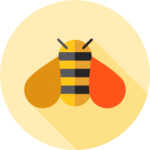Artificial intelligence (AI) and intertwined concepts such as machine learning and predictive modelling have become indispensable in modern industries. It is often estimated that by 2030, AI will contribute up to $15.7 trillion to the global economy. AI has the potential to transform a wide number of industries. All over the world, AI is helping people do their jobs more effectively, from doctors who diagnose sepsis in patients to scientists who track endangered animals in the wild. In this article, we explore some of the more unusual uses of AI.
Rather than creating ominous issues for humankind, AI is helping people around the world do their jobs more effectively, including doctors who diagnose sepsis in patients and scientists who track endangered animals in the wild.
Below are some of the most unusual uses of AI that provide value to our society and go beyond their traditional and widely applied usages across industries.
Helping People
Rescue Missions
AI technology is helping first responders find victims of earthquakes, floods and other natural disasters.
Normally, responders need to examine aerial footage to determine where people could be stranded. However, examining a vast amount of photos and drone footage is very time and labor-intensive; this is a problem as time is a critical factor for victims’ survival.
AI developed at Texas A&M University permits computer programmers to write basic algorithms that can examine extensive footage and find missing people in less than two hours.
Diagnosing Sepsis
Sepsis is a potentially life-threatening complication of an infection, but it is treatable if identified promptly. When not identified in time, patients can experience organ failure or even death. Today, AI algorithms that analyse electronic medical records data can help physicians diagnose sepsis an average of 24 hours earlier than previously used methods, according to the Johns Hopkins Whiting School of Engineering. The AI system, called Targeted Real-Time Early Warning System (TREWScore) can also be used to monitor other conditions, including diabetes and high blood pressure.
Better Surgeries and Prosthetics
Surgical robotics today are machine learning-enabled tools that provide doctors with extended precision and control. These robots enable shortening the patients’ hospital stay, positively affecting the surgical experience, and reducing medical costs.
Mind-controlled robotic arms and brain chip implants have begun helping paralyzed patients regain not only mobility but also sensations of touch. Machine learning and AI are further helping these technologies improve the patient experience.
Earth & Wildlife
Robot Bees
Bees are indispensable to crop pollination, however, they are very susceptible to pesticides, diseases, and other environmental concerns that lead to their fragile populations dwindling. To ensure that these concerns do not lead to famine, researchers have developed a robot bee drone that incorporates artificial intelligence, GPS, and a high-resolution camera to pollinate in a manner similar to honeybees.
Tracking Wildlife Populations
Applications like iNaturalist and eBirds, that collect data from vast circles of experts on the species encountered, are helping to keep track of species populations, favorable ecosystems, and migration patterns. These applications also have an important role in the better identification and protection of marine and freshwater ecosystems.
Wildlife Poaching Prevention
Wildlife poaching is a global problem as species get hunted toward extinction. For example, the latest African census showed a 30 per cent decline in elephant populations between 2007 and 2014. Wildlife conservation areas have been established to protect these species from poachers, and these areas are protected by park rangers. The rangers, however, do not always have the resources to patrol the vast areas efficiently. Predictive modelling has been used and tested in Uganda’s Queen Elizabeth National Park to predict poaching threat levels. Such models can be used to generate efficient and feasible patrol routes for the park rangers.
Smart Agriculture
Neural networks are starting to be used to deliver smart agricultural solutions. Besides the use of both artificial and bio-sensor driven algorithms to provide a complete monitoring of the soil and crop yield, there are technologies that can be used to provide predictive analytic models to track and predict various factors and variables that could affect future yields.
For example, Berlin-based agricultural tech startup PEAT has developed a deep learning algorithm-based application called Plantix that can identify defects and nutrient deficiencies in the soil. Their algorithms correlate particular foliage patterns with certain soil defects, plant pests, and diseases.
By: Jenya Doudareva, Senior Associate
Find out how artificial intelligence can benefit your industry.
CONTACT US







